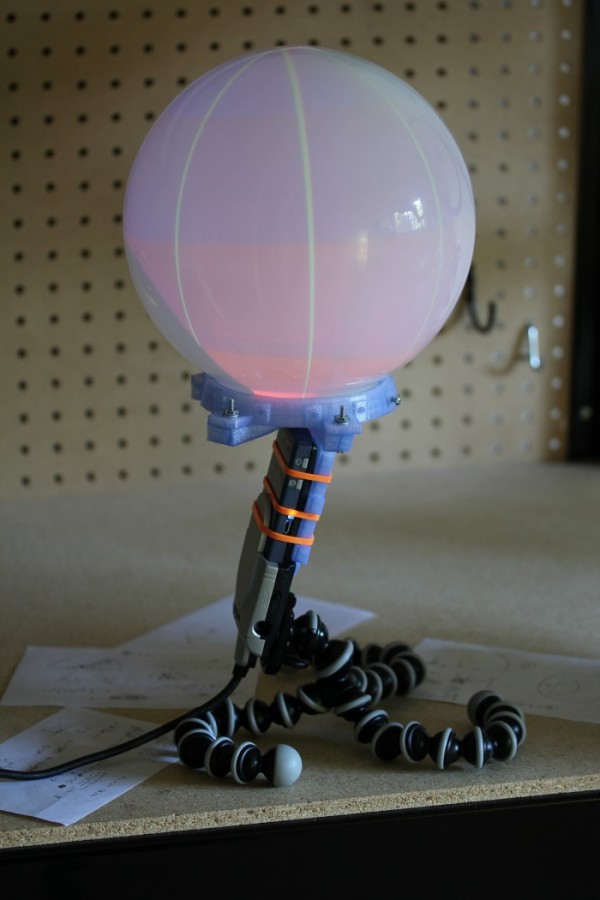September 19, 2011 9:00 AM
by Sean Michael Ragan
Pico Projector + Light Fixture + Free Code = Desktop Spherical Display

Sometimes, I get this feeling like I've seen it all—that nothing that comes along is ever going to inspire or delight me the same way that certain ideas, systems, inventions, and/or artworks did when I was younger. It always passes, sooner or later, but while I'm under that spell it can be…well, it can be a bit depressing, honestly. So I feel like I ought to thank International Man of Mystery Nirav Patel, somewhat more personally than usual, for making and sharing this wonderful thing. I am inspired.
He calls it Science on a Snow Globe, and it was, itself, inspired by NOAA's Science on a Sphere project. Whereas the Science on a Sphere globe displays are 8′ across, use four projectors and five computers apiece, and cost thousands of dollars individually, Nirav's system sits on a desktop, projects onto an 8″ frosted glass lamp globe, uses a single laser picoprojector and a single computer, and costs about $200. Nirav writes:
The basic design here is to shoot a picoprojector through a 180° fisheye lens into a frosted glass globe. The projector is a SHOWWX since I already have one, but it likely works better than any of the non-laser alternatives since you avoid having to deal with keeping the surface of the sphere focused. Microvision also publishes some useful specs, and if you ask nicely, they'll email you a .STL model of their projector. The lens is an Opteka fisheye designed to be attached to handheld camcorders. It is by far the cheapest 180° lens I could find with a large enough opening to project through. The globe, as in my last dome based project is for use on lighting fixtures. This time I bought one from the local hardware store for $6 instead of taking the one in my bathroom.
Nirav printed a custom bracket that holds projector, lens, and globe together in the right arrangement, and mounted the whole thing on a small off-the-shelf tripod. Lots of nummy technical details are available here, and the code, which Nirav wrote himself, is at Github. [Thanks, Matt Mets!]
More:
- Nice homebrew 3D LED Globe
- LED spinning globe will dazzle you
- DIY LED Spinning globe
- Kinect + Fancy Spherical Display = Giant Movement-Tracking Eyeball
- Monkeylectric 3D Spherical Pov Display
Dr. Art Trembanis
No comments:
Post a Comment